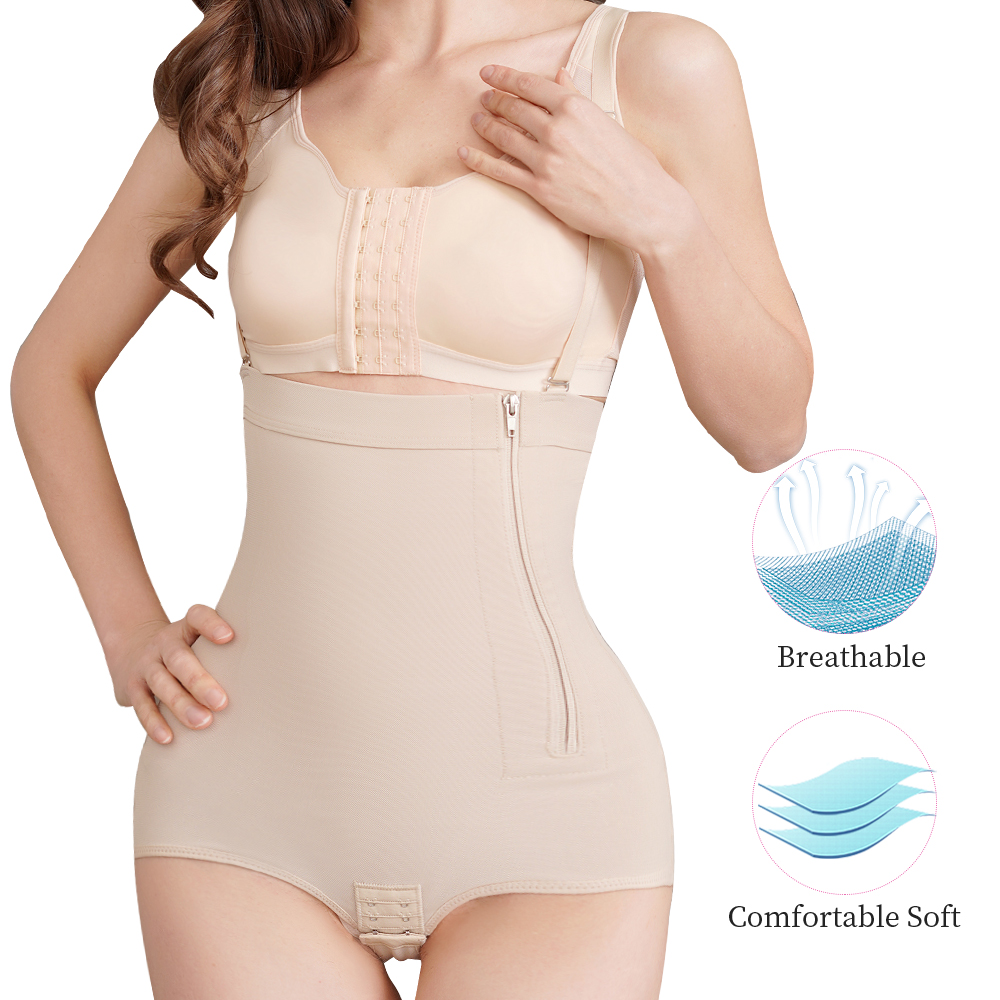Großhandel Shapewear Inventar: 5 Wege, die Gewinne in die Höhe zu treiben
Bestandsoptimierung meistern: Bedarf decken, Kosten minimieren und Umsatz maximieren
In der schnelllebigen und sich ständig weiterentwickelnden Welt des Großhandels ShapewearEin effektives Bestandsmanagement ist nicht nur ein Kästchen auf Ihrer Aufgabenliste - es ist eine strategische Notwendigkeit, die über Ihre Rentabilität entscheiden kann. Stellen Sie sich Folgendes vor: Bei einem zu geringen Lagerbestand drohen die gefürchteten Stockouts, die frustrierte Kunden mit leeren Händen zurücklassen und potenzielle Gewinne direkt an Ihre Konkurrenten weitergeben. Auf der anderen Seite bringt ein zu großer Bestand eine Reihe von Herausforderungen mit sich: himmelhohe Lagerkosten, die drohende Gefahr der Veralterung, wenn sich Trends ändern, und ein verminderter Cashflow, der Ihre Fähigkeit, in Wachstumschancen zu investieren, beeinträchtigen kann.
Dieser umfassende Blog-Beitrag befasst sich mit fünf bewährten Strategien für die Bestandsverwaltung, die genau auf die spezifischen Nuancen und Möglichkeiten des Großhandels für Shapewear zugeschnitten sind. Indem Sie diese Strategien in Ihre Betriebsabläufe einbinden, können Sie den begehrten "Sweet Spot" erreichen - die Optimierung der Lagerbestände, um die Kundennachfrage nahtlos zu erfüllen, unnötige Kosten zu minimieren und letztendlich einen Anstieg Ihres Gewinns zu erzielen.
1. Entschlüsselung der Shapewear-Landschaft: Enthüllung von Trends, Saisonalität und sich entwickelnden Kundenwünschen
Bevor wir uns mit den Techniken des Bestandsmanagements befassen, ist es wichtig, sich mit den dynamischen Kräften vertraut zu machen, die die Nachfrage auf dem Markt für Shapewear bestimmen. Stellen Sie sich das so vor, als würden Sie die Strömungen verstehen, bevor Sie die Segel setzen - so können Sie effektiver navigieren und Ihr Ziel mit größerem Erfolg erreichen. Im Folgenden erfahren Sie, worauf Sie achten müssen:
- Trendvorhersage und Antizipation von Veränderungen: Der Markt für Shapewear ist ein Wirbelwind an Innovationen und sich entwickelnden Stilen, die von der Laufstegmode bis hin zu viralen Trends in den sozialen Medien beeinflusst werden. Verfolgen Sie aufmerksam Modepublikationen, besuchen Sie Branchenmessen und nutzen Sie Social Listening Tools, um aufkommende Trends zu erkennen, wie z. B. neue Stoffinnovationen (nahtlos, nachhaltig, formend), Designentwicklungen (hoch tailliert, rückenfrei, formende Shorts) oder Verschiebungen bei den Verbraucherpräferenzen (Körperfreundlichkeit, Inklusivität, Komfortorientierung). Wenn Sie der Entwicklung voraus sind, können Sie Nachfrageverschiebungen vorhersehen, Ihre Einkaufsstrategien anpassen und sicherstellen, dass Sie die heißesten Artikel auf Lager haben, wenn die Kunden kommen.
- Saisonalität und Kollektionsplanung: Ausrichtung auf Spitzenverkaufszeiten: Der Absatz von Shapewear schwankt oft mit den Jahreszeiten und wird durch Feiertage, besondere Ereignisse und sogar das Wetter beeinflusst. So steigt die Nachfrage nach trägerloser und rückenfreier Shapewear in der Regel während der Hochzeits- und Abschlussballsaison sprunghaft an, während in den kälteren Monaten die Nachfrage nach formenden Leggings oder Strumpfhosen mit Kontrollkragen steigt. Schauen Sie sich Ihre historischen Verkaufsdaten genau an, um diese wiederkehrenden saisonalen Muster zu erkennen, und nutzen Sie dieses Wissen, um Ihre Kaufentscheidungen für Ihren Bestand zu treffen. Indem Sie Ihre Lagerbestände an den erwarteten Spitzen und Tälern ausrichten, können Sie den Umsatz in Zeiten hoher Nachfrage maximieren und das Risiko von Überbeständen in schwächeren Monaten minimieren.
- Kundensegmentierung: Anpassung des Inventars an individuelle Präferenzen: Ihr Kundenstamm ist kein Monolith - er besteht aus einer Vielzahl von Boutiquen, Einzelhändlern und Online-Verkäufern, die alle ihre eigene Zielgruppe ansprechen und ein unterschiedliches Kaufverhalten haben. Segmentieren Sie Ihren Kundenstamm anhand von Faktoren wie der Art der Boutique (Brautmoden, Dessous, Online), der demografischen Zielgruppe (Alter, Körpertyp, Lebensstil), der durchschnittlichen Bestellmenge und sogar der geografischen Lage. Dank dieses detaillierten Verständnisses können Sie Ihr Sortiment auf die spezifischen Bedürfnisse und Vorlieben der einzelnen Kundensegmente abstimmen und sicherstellen, dass Sie die richtigen Produkte zur Verfügung haben, um jeden Käufertyp zu begeistern.
2. Präzise Vorhersage der Nachfrage: Nutzung von Daten zur Vorhersage künftiger Verkäufe und zur Optimierung von Lagerbeständen
Stellen Sie sich vor, Sie hätten eine Kristallkugel, die Ihnen die Zukunft Ihrer Shapewear-Verkäufe verrät - das ist die Macht der genauen Nachfrageprognose. Durch die geschickte Verknüpfung historischer Daten, aktueller Markteinblicke und bewährter statistischer Verfahren können Sie Vermutungen in fundierte Entscheidungen darüber umwandeln, wie viel Bestand Sie einkaufen, wann Sie die entscheidenden Bestellungen aufgeben und wie Sie Ihren Bestand strategisch auf die verschiedenen Modelle, Größen und Farben verteilen. Hier ist Ihr Prognose-Toolkit:
- Einblicke aus historischen Verkaufsdaten gewinnen: Ihre historischen Verkaufsdaten sind eine Fundgrube wertvoller Erkenntnisse, die Muster, Trends und saisonale Schwankungen erkennen lassen, die Ihnen bei Ihren künftigen Entscheidungen helfen können. Analysieren Sie frühere Verkaufsdaten, um wiederkehrende Muster zu erkennen, saisonale Spitzen und Täler zu identifizieren und historische Wachstumsraten zu berechnen. Diese historische Perspektive bietet eine solide Grundlage für die Vorhersage der künftigen Nachfrage, so dass Sie fundiertere Kaufentscheidungen treffen und das Risiko von kostspieligen Überbeständen oder Fehlbeständen minimieren können.
- Berücksichtigung von Vorlaufzeiten und möglichen Verzögerungen: Vorlaufzeiten - die oft unvorhersehbare Dauer zwischen der Bestellung bei Ihrem Lieferanten und dem Erhalt der Lieferung - sind eine entscheidende Variable in der Prognosegleichung. Längere Vorlaufzeiten erfordern eine frühere Prognose und Auftragserteilung, um sicherzustellen, dass Sie über einen ausreichenden Lagerbestand verfügen, um die erwartete Nachfrage zu decken. Berücksichtigen Sie mögliche Verzögerungen aufgrund unvorhergesehener Umstände (Produktionsprobleme, Lieferengpässe, globale Ereignisse), indem Sie einen Puffer zu Ihren Vorlaufzeitschätzungen hinzufügen, damit Sie auf das Unerwartete vorbereitet sind.
- Der Zeit immer einen Schritt voraus: Marktforschung und Branchentrends: Der Markt für Shapewear entwickelt sich ständig weiter und wird von der allgemeinen Wirtschaftslage, dem sich ändernden Verbraucherverhalten und sogar den Aktivitäten der Wettbewerber beeinflusst. Halten Sie sich über diese externen Faktoren auf dem Laufenden, indem Sie regelmäßig Branchenpublikationen konsultieren, Fachmessen besuchen und Marktforschungsberichte abonnieren. Dieser externe Blickwinkel liefert einen wertvollen Kontext für die Verfeinerung Ihrer Prognosemodelle und ermöglicht es Ihnen, Ihre Bestandsstrategien auf der Grundlage der erwarteten Marktveränderungen anzupassen.
- Datengestützte Präzision: Statistische Prognosemethoden: Heben Sie Ihre Prognosegenauigkeit auf die nächste Stufe, indem Sie bewährte statistische Methoden einsetzen. Gleitende Durchschnitte glätten Schwankungen in historischen Daten, die exponentielle Glättung verleiht den jüngsten Datenpunkten mehr Gewicht, und die Regressionsanalyse identifiziert Korrelationen zwischen Verkäufen und externen Faktoren. Diese Methoden, die häufig in Bestandsverwaltungssoftware integriert sind, nutzen die Macht der Daten, um Ihre Vorhersagen zu verfeinern, das Rätselraten zu minimieren und die Präzision Ihrer Bestandsentscheidungen zu maximieren.
3. Die Auswahl eines leistungsstarken Inventarverwaltungssystems: Von bescheidenen Tabellenkalkulationen zu robusten Softwarelösungen
Genauso wie ein Bildhauer die richtigen Werkzeuge benötigt, um sein Meisterwerk zu formen, ist für eine effektive Bestandsverwaltung das richtige System erforderlich, um Lagerbestände zu verfolgen, Bestellungen zu verwalten und wichtige Prozesse zu rationalisieren. Die optimale Wahl für Ihr Unternehmen hängt von einer Reihe von Faktoren ab - von der Größe Ihres Unternehmens und dem Transaktionsvolumen, Ihren Budgeteinschränkungen und der Komplexität Ihrer Inventaranforderungen. Lassen Sie uns die Optionen erkunden:
- Tabellenkalkulations-Software: Ein einfacher Startpunkt für kleinere Betriebe: Für kleinere Shapewear-Großhandelsunternehmen mit einer begrenzten Anzahl von SKUs (Stock Keeping Units) und relativ einfachen Abläufen können Tabellenkalkulationsprogramme wie Microsoft Excel oder Google Sheets ein einfaches, aber funktionales Niveau der Bestandsverfolgung bieten. Mit Tabellenkalkulationen können Sie eingehende und ausgehende Bestände manuell protokollieren, einfache Bestandsmetriken berechnen und einfache Berichte erstellen. Tabellenkalkulationen sind zwar kosteneffizient, können aber mit zunehmender Größe Ihres Unternehmens umständlich und fehleranfällig werden.
- Dedizierte Bestandsverwaltungssoftware: Skalierung von Effizienz und Automatisierung: Wenn Ihr Großhandelsunternehmen wächst und Ihr Bestand komplexer wird, ist es an der Zeit, auf eine spezielle Bestandsverwaltungssoftware umzusteigen. Diese Softwarelösungen bieten eine Reihe fortschrittlicher Funktionen zur Rationalisierung und Automatisierung wichtiger Prozesse. Denken Sie an die automatische Erstellung von Bestellungen, Barcode- oder RFID-Scans für eine effiziente Bestandsaufnahme, die Bestandsverfolgung in Echtzeit über mehrere Standorte hinweg und die nahtlose Integration mit Ihrer Buchhaltungs- und E-Commerce-Plattform. Dieser Automatisierungsgrad minimiert die manuelle Dateneingabe, reduziert Fehler und liefert wertvolle Erkenntnisse für Ihre Bestandsentscheidungen.
- Systeme zur Unternehmensressourcenplanung (ERP): Zentralisierte Kontrolle für komplexe Vorgänge: Für größere Shapewear-Großhändler mit komplizierten Abläufen, mehreren Lagern und einem hohen Transaktionsvolumen ist ein Enterprise Resource Planning (ERP)-System der Goldstandard. ERP-Systeme fungieren als zentrales Nervensystem für Ihr gesamtes Unternehmen und integrieren die Bestandsverwaltung mit den Finanzdaten, dem Kundenbeziehungsmanagement (CRM), dem Lieferkettenmanagement und anderen Kernprozessen. Diese ganzheitliche Sichtweise bietet einen unvergleichlichen Einblick in Ihre Abläufe, ermöglicht eine datengestützte Entscheidungsfindung und optimiert die Effizienz in Ihrem gesamten Unternehmen.
4. Bewährte Techniken zur Bestandskontrolle anwenden: Das perfekte Gleichgewicht der Bestände finden
Mit dem richtigen Bestandsverwaltungssystem ist es an der Zeit, bewährte Bestandskontrolltechniken einzuführen, die sicherstellen, dass Sie die optimale Menge an Shapewear vorrätig haben - genug, um die Kundennachfrage zu befriedigen, ohne übermäßig viel Kapital in langsam drehenden Beständen zu binden. Hier erfahren Sie, wie Sie dieses empfindliche Gleichgewicht finden:
- Festlegen von Par Levels: Ihr Inventar-Sicherheitsnetz: Stellen Sie sich "Mindestmengen" als Ihr Sicherheitsnetz für den Bestand vor - die Mindestmenge jedes Shapewear-Modells und jeder Größe, die Sie auf Lager halten wollen, um die gefürchteten Stockouts zu vermeiden. Legen Sie Ihre Mindestmengen auf der Grundlage historischer Verkaufsdaten, Vorlaufzeiten und Ihres gewünschten Servicegrads fest (der Prozentsatz der Bestellungen, die Sie sofort ab Lager erfüllen möchten). Wenn Ihr Bestand unter den Nennwert sinkt, wird ein automatischer Nachbestellungspunkt ausgelöst, der Sie auffordert, den Bestand aufzufüllen, bevor er ein kritisches Niveau erreicht.
- First-In, First-Out (FIFO): Minimierung der Veralterung und Maximierung der Frische: In der Welt der modischen Produkte wie Shapewear ist Frische wichtig. Die FIFO-Methode (First-In, First-Out) stellt sicher, dass ältere Bestände zuerst verkauft oder ausgeliefert werden, wodurch das Risiko der Veralterung minimiert und sichergestellt wird, dass die Kunden die neuesten, begehrtesten Artikel erhalten. Dies ist besonders wichtig für saisonale Artikel oder Stile, die von schnell wechselnden Trends beeinflusst werden.
- Regelmäßige Zykluszählung: Sicherstellung der Genauigkeit und Aufdeckung von Diskrepanzen: Betrachten Sie das Cycle-Counting als regelmäßigen Gesundheitscheck für Ihre Bestandsdaten. Anstelle einer zeitaufwändigen vollständigen Bestandszählung wird beim Cycle Counting jeden Tag ein kleiner Teil des Bestands physisch gezählt, die physische Zählung mit den Bestandsaufzeichnungen verglichen und etwaige Diskrepanzen untersucht. Dieser fortlaufende Prozess trägt dazu bei, genaue Bestandsdaten zu erhalten, potenzielle Probleme wie Schwund (Diebstahl, Beschädigung, Verlagerung) aufzudecken und einen realistischeren Überblick über Ihre Lagerbestände zu erhalten.
- ABC-Bestandsanalyse: Priorisierung der Bemühungen und Optimierung der Kontrolle: Nicht alle Shapewear-Modelle sind gleich - einige sind Bestseller, die den Großteil Ihres Umsatzes ausmachen, während andere sich langsamer bewegen und einen anderen Ansatz erfordern. Die ABC-Bestandsanalysemethode hilft Ihnen bei der Einteilung Ihres Bestands in drei Gruppen auf der Grundlage von Wert und Umsatzvolumen: "A"-Artikel sind Ihre VIPs - Produkte mit hohem Wert und hoher Nachfrage, die die strengste Bestandskontrolle und möglicherweise häufigere Bestellungen erfordern. "B"-Artikel liegen im Mittelfeld, während C"-Artikel Ihre langsameren Artikel sind, die einen größeren Sicherheitsbestand und weniger häufige Bestellungen ermöglichen. Wenn Sie Ihre Bestandsverwaltung auf der Grundlage dieser Kategorisierung nach Prioritäten ordnen, können Sie Ihre Lagerbestände optimieren und Ihre Ressourcen effektiver einsetzen.
5. Strategische Lieferantenallianzen pflegen: Pünktliche Lieferungen, Flexibilität und gemeinsamer Erfolg sicherstellen
In der komplizierten Welt der Shapewear-Großhändler sind Ihre Lieferanten nicht einfach nur Verkäufer - sie sind strategische Verbündete, deren Zuverlässigkeit und Flexibilität über Ihren Erfolg entscheiden können. Der Aufbau starker, für beide Seiten vorteilhafter Beziehungen zu Ihren Lieferanten ist von größter Bedeutung, um pünktliche Lieferungen zu gewährleisten, günstige Konditionen auszuhandeln und die unvermeidlichen Unebenheiten auf dem Weg zu meistern. Hier ist Ihr Leitfaden für den Aufbau von Win-Win-Partnerschaften:
- Aushandeln von Win-Win-Vereinbarungen: Bedingungen, die gegenseitiges Wachstum fördern: Betrachten Sie die Verhandlungen mit den Lieferanten als einen kooperativen Prozess, der darauf abzielt, Bedingungen festzulegen, von denen beide Parteien profitieren. Teilen Sie Ihre Geschäftsanforderungen und Wachstumsprognosen klar mit, und seien Sie offen für das Verständnis der Einschränkungen und Fähigkeiten des Lieferanten. Verhandeln Sie Schlüsselaspekte wie Mindestbestellmengen (MOQs), Vorlaufzeiten, Zahlungsbedingungen und Rückgaberichtlinien, um sicherzustellen, dass sie mit Ihrem Geschäftsmodell übereinstimmen und Flexibilität bei der Erweiterung Ihres Unternehmens ermöglichen.
- Diversifizierung Ihrer Lieferkette: Risikominimierung durch mehrere Beschaffungsoptionen: Wenn Sie sich auf einen einzigen Lieferanten verlassen, egal wie zuverlässig dieser zu sein scheint, setzen Sie sich Risiken aus. Produktionsverzögerungen, unvorhergesehene Ereignisse oder sogar Änderungen in der Geschäftsstrategie eines Lieferanten können Ihre Lieferkette unterbrechen und Ihre Fähigkeit beeinträchtigen, die Kundennachfrage zu erfüllen. Diversifizieren Sie Ihre Beschaffung, indem Sie mehrere Lieferanten für Ihre wichtigsten Shapewear-Modelle ermitteln und prüfen. Diese Redundanz bietet ein Sicherheitsnetz, das die Geschäftskontinuität angesichts unerwarteter Unterbrechungen gewährleistet.
- Gemeinsame Planung und offene Kommunikation: Strategien zum gegenseitigen Nutzen abstimmen: Transparenz und offene Kommunikation sind die Eckpfeiler einer guten Lieferantenbeziehung. Teilen Sie Ihren Hauptlieferanten Ihre Absatzprognosen, Bestandspläne und alle erwarteten Nachfrageschwankungen mit. Dieser proaktive Ansatz ermöglicht es ihnen, Ihren Bedarf zu antizipieren, ihre Produktionspläne anzupassen und Ressourcen entsprechend zuzuweisen. Die gemeinsame Planung fördert ein Gefühl der Partnerschaft, was zu reibungsloseren Abläufen, genaueren Vorlaufzeiten und möglicherweise sogar zu einer bevorzugten Behandlung in Zeiten hoher Nachfrage führt.
- Vertrauensbildung als Grundlage für langfristigen Erfolg: Konzentrieren Sie sich über das Transaktionsgeschäft hinaus auf den Aufbau echter, vertrauensvoller Beziehungen zu Ihren Lieferanten. Kommunizieren Sie regelmäßig, geben Sie konstruktives Feedback, und feiern Sie gemeinsam Erfolge. Vertrauen fördert Loyalität und führt zu günstigeren Konditionen, größerer Flexibilität und der Bereitschaft, sich für Ihr Unternehmenswachstum besonders ins Zeug zu legen. Denken Sie daran, dass ein zuverlässiges und unterstützendes Lieferantennetz ein unschätzbarer Vorteil in der wettbewerbsorientierten Welt des Shapewear-Großhandels ist.
Erfolg messen: Leistungsindikatoren (KPIs) zur Verfolgung und Optimierung Ihrer Bestandsverwaltung
Qualitatives Feedback von Ihren Kunden ist zwar von unschätzbarem Wert, aber ebenso wichtig ist es, die Wirksamkeit Ihrer Bestandsverwaltungsstrategien anhand objektiver Datenpunkte zu quantifizieren. Leistungskennzahlen (Key Performance Indicators, KPIs) bieten eine messbare Möglichkeit, Ihre Fortschritte zu verfolgen, verbesserungswürdige Bereiche zu identifizieren und die greifbaren Auswirkungen Ihrer Bestandsoptimierungsmaßnahmen zu demonstrieren. Hier sind die wichtigsten zu überwachenden KPIs:
| KPI | Beschreibung |
|---|---|
| Umschlagshäufigkeit der Vorräte | Dieser KPI misst die Effizienz, mit der Sie Ihren Bestand verkaufen und wieder auffüllen. Sie wird berechnet, indem die Kosten der verkauften Waren durch den durchschnittlichen Bestandswert geteilt werden. Eine höhere Umschlagshäufigkeit deutet im Allgemeinen darauf hin, dass Sie Ihren Bestand schnell verkaufen, die Lagerkosten minimieren und das Risiko der Veralterung verringern. |
| Durchverkaufsrate | Diese Kennzahl bietet einen detaillierten Überblick über einzelne Shapewear-Modelle und berechnet den Prozentsatz eines bestimmten Produkts, der innerhalb eines bestimmten Zeitraums (z. B. 30, 60 oder 90 Tage) verkauft wurde. Eine hohe Abverkaufsrate deutet auf eine starke Nachfrage nach diesem bestimmten Modell hin, während eine niedrige Rate darauf hindeuten könnte, dass Sie die Preisgestaltung oder Werbeaktionen anpassen oder den Artikel sogar aus dem Sortiment nehmen müssen. |
| Stockout-Rate | Lieferengpässe sind kostspielig und führen zu Umsatzeinbußen, frustrierten Kunden und potenziellem Schaden für Ihren Ruf. Die Fehlmengenquote gibt an, wie viel Prozent der Zeit ein bestimmter Shapewear-Artikel nicht vorrätig ist. Eine niedrigere Fehlmengenquote deutet auf eine bessere Bestandskontrolle, eine genauere Bedarfsprognose und eine höhere Kundenzufriedenheit hin. |
| Bruttomargen-Investitionsrendite (GMROI) | Dieser KPI geht über den Umsatz hinaus und misst die Rentabilität Ihrer Bestandsinvestitionen. Er wird berechnet, indem der Bruttogewinn durch die durchschnittlichen Bestandskosten geteilt wird. Ein höherer GMROI zeigt an, dass Sie eine hohe Rendite aus Ihren Bestandsinvestitionen erzielen, Ihre Preisstrategien optimieren und unnötige Ausgaben minimieren. |
| Vorräte Buchwert | Die Lagerung von Beständen ist mit Kosten verbunden - Lagergebühren, Versicherung, Handhabung und das Risiko von Veralterung oder Beschädigung. Wenn Sie Ihre Lagerhaltungskosten als Prozentsatz des Gesamtwerts Ihrer Bestände verfolgen, können Sie feststellen, in welchen Bereichen Sie diese Kosten senken können, z. B. durch die Optimierung des Lagerraums, die Aushandlung besserer Versicherungstarife oder die Minimierung von Lagerbeständen mit geringer Umschlagshäufigkeit. |
| Auftragserfüllungsrate | Dieser kundenorientierte KPI misst den Prozentsatz der Kundenbestellungen, die Sie vollständig aus dem verfügbaren Bestand erfüllen können. Eine hohe Auftragserfüllungsrate deutet auf eine effiziente Bestandsverwaltung, genaue Lagerbestände und ein positives Kundenerlebnis hin, da die Kunden ihre vollständigen Bestellungen umgehend erhalten. |
Tabelle 1: Wichtige Leistungsindikatoren (KPIs) für die Bestandsverwaltung
Durch die sorgfältige Überwachung dieser KPIs erhalten Sie unschätzbare Einblicke in den Zustand Ihres Bestandsmanagements, können verbesserungswürdige Bereiche ausfindig machen und datengestützte Entscheidungen treffen, um Ihre Lagerbestände zu optimieren, unnötige Kosten zu reduzieren und letztendlich die Rentabilität Ihres Shapewear-Großhandels zu steigern.
Schlussfolgerung: Die Bestandsverwaltung von einer Aufgabe zu einem strategischen Vorteil machen
In der dynamischen und wettbewerbsintensiven Welt des Shapewear-Großhandels ist ein effektives Bestandsmanagement nicht nur eine Aufgabe hinter den Kulissen - es ist ein strategischer Hebel, der Ihr Unternehmen zu mehr Rentabilität, Kundenzufriedenheit und langfristigem Erfolg führen kann. Wenn Sie die Feinheiten des Markts für Shapewear genau kennen, die Möglichkeiten datengestützter Prognosen nutzen, robuste Bestandskontrolltechniken implementieren und starke Lieferantenbeziehungen pflegen, verwandeln Sie die Bestandsverwaltung von einer notwendigen Aufgabe in eine Quelle des Wettbewerbsvorteils. Denken Sie daran, dass in der Welt des Shapewear-Großhandels ein optimierter Bestand die Grundlage für ein florierendes und widerstandsfähiges Geschäft ist.

S-SHAPER bieten eine breite Palette von Shapewear-Produkte Wenn Sie sich für unsere Produkte interessieren, gehen Sie bitte zur Produktseite. Wenn Sie Fragen haben, können Sie sich gerne an uns wenden. kontaktiere uns!
Teilen Sie diesen Beitrag:
Inhaltsverzeichnis
Am beliebtesten.


Sweat-Shorts-Fabrik in Südamerika für Gymwear-Startups

Sauna-Gürtel-Hersteller in Südamerika für Gesundheits- & Wellness-Marken

Kontaktiere uns
Ähnliche Beiträge

Hersteller von Armmanschetten in Südamerika für Sportbekleidungs-Distributoren
1. Warum Südamerika als Zentrum für die Armmanschetten-Fertigung aufkommt In den letzten Jahren ist Südamerika zu einer strategischen Fertigungsbasis für Sportbekleidung geworden, insbesondere für Performance-Accessoires wie

Sweat-Shorts-Fabrik in Südamerika für Gymwear-Startups
1. Warum Südamerika als Fertigungszentrum für Gymwear aufstrebt Südamerika gewinnt rasch Anerkennung als strategischer Standort für die Fertigung von Gymwear und Activewear – einschließlich Sweat-Shorts

Sauna-Gürtel-Hersteller in Südamerika für Gesundheits- & Wellness-Marken
1. Warum Gesundheits- & Wellness-Marken in Saunagürtel investieren Die Gesundheits- und Wellness-Branche boomt global, und Saunagürtel haben sich als Top-Produkt in der

Großhandel Fabrik für formende Slips in Südamerika für Schönheitskliniken
1. Warum Schönheitskliniken auf Großhändler für formende Slips setzen In den letzten Jahren haben Schönheitskliniken ihre Angebote über Hautpflege und kosmetische Eingriffe hinaus erweitert und lifestyle-verbessernde Produkte integriert. Eine der






